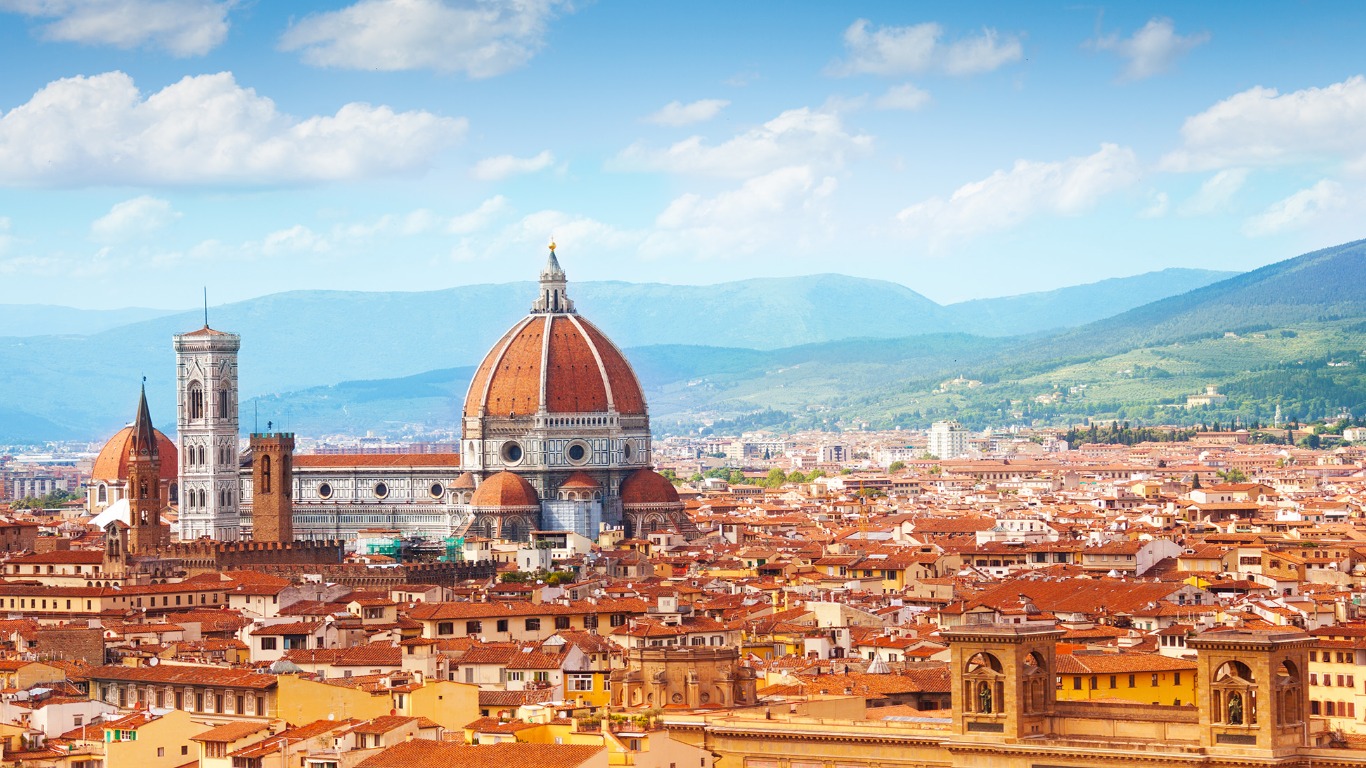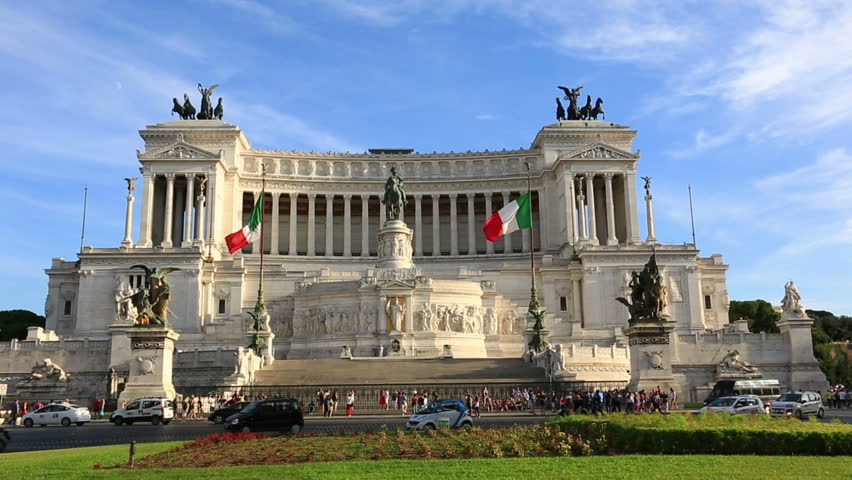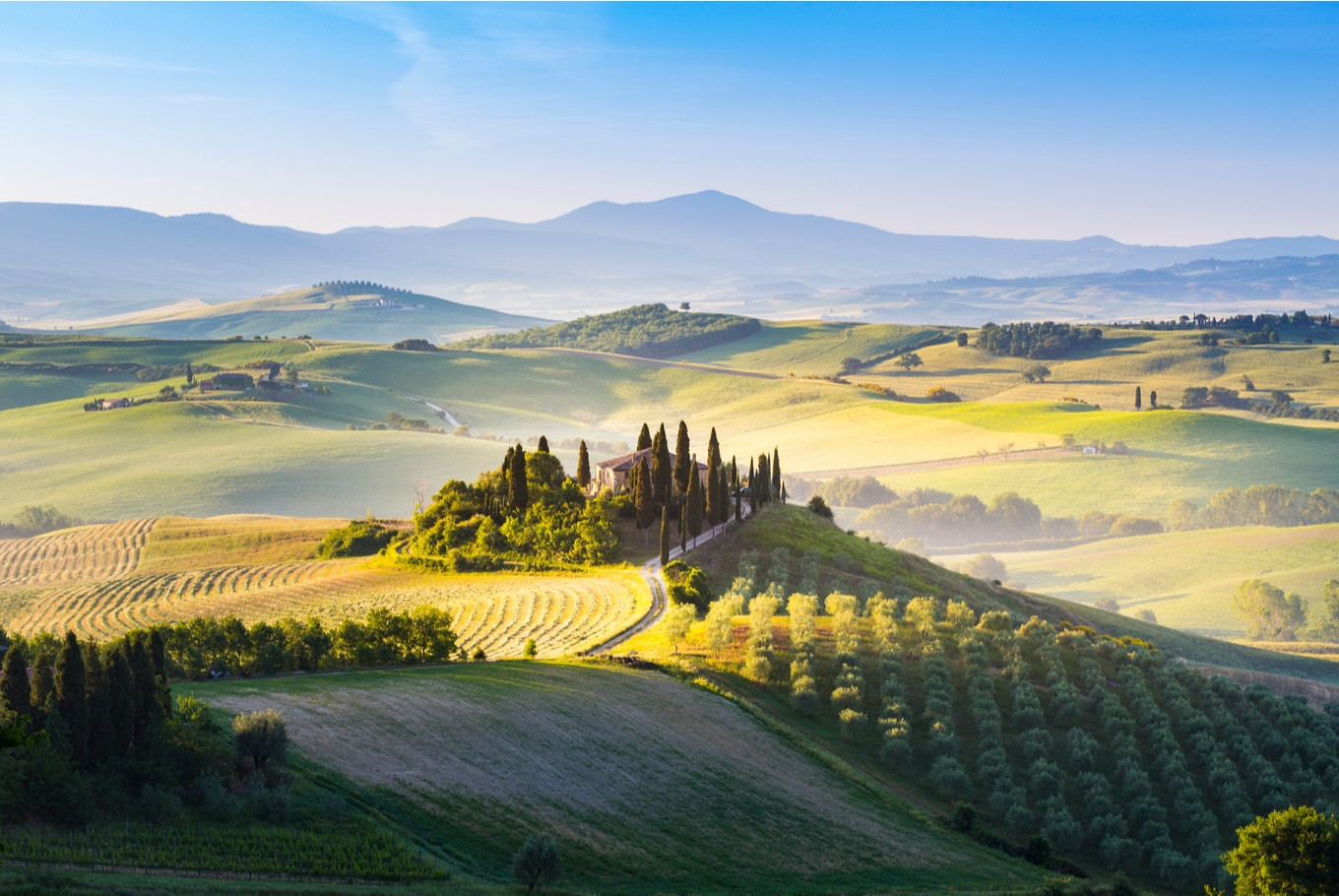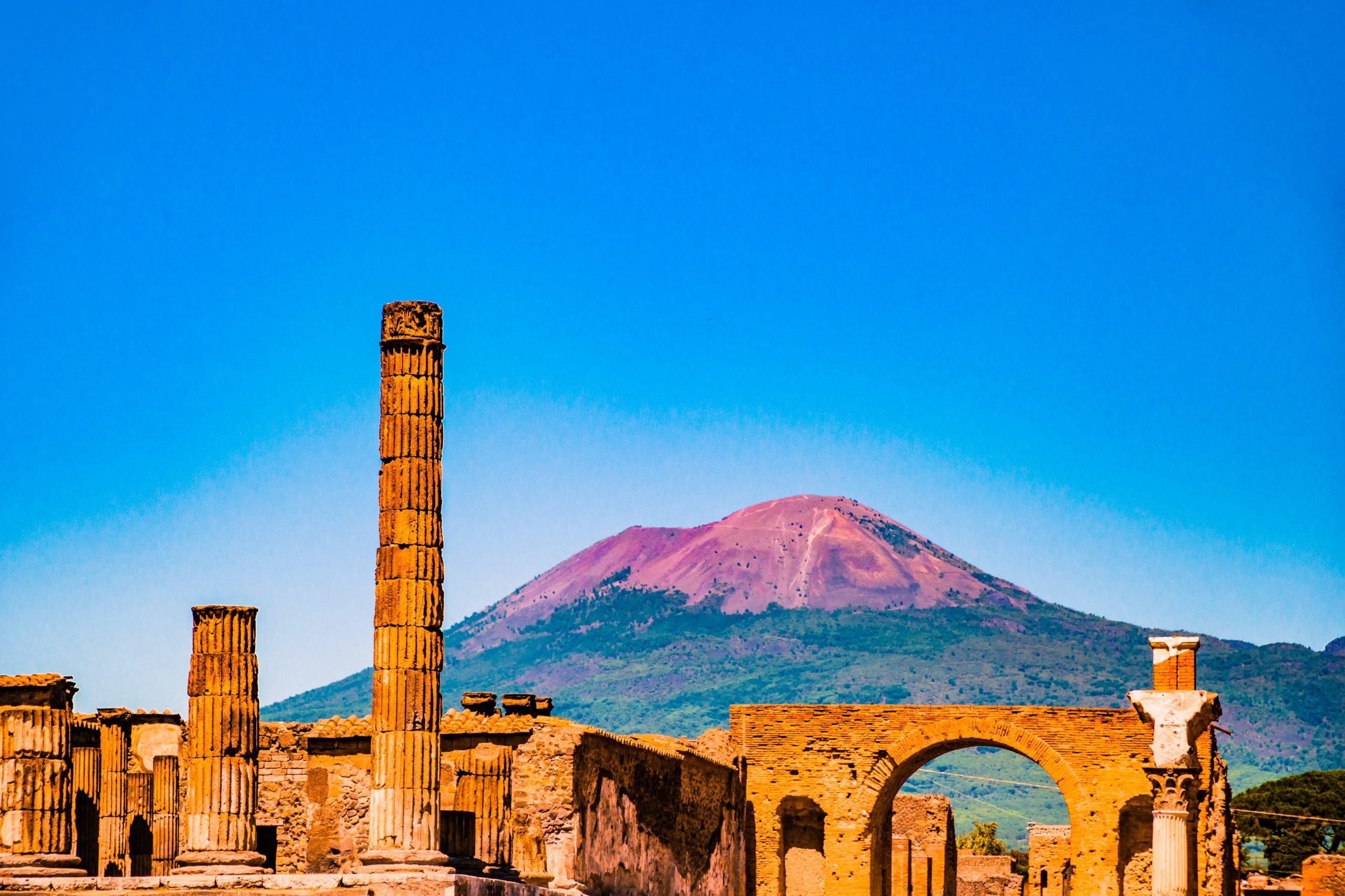
Cradle of the Renaissance, romantic, enchanting and utterly irresistible, Florence (Firenze) is a place to feast on world-class art and gourmet Tuscan cuisine. The present city of Florence was established by Julius Caesar in 59 BC as a settlement for his veteran soldiers and was named originally Fluentia, owing to the fact that it was built between two rivers, which was later changed to Florentia (“flowering”).

Few cities are so compact in size or so packed with extraordinary art and architecture masterpieces at every turn. The urban fabric of this small city, on the banks of the Arno river in northeastern Tuscany, has hardly changed since the Renaissance and its narrow cobbled streets are a cinematic feast of elegant 15th- and 16th-century palazzi (palaces), medieval candle-lit chapels, fresco-decorated churches, marble basilicas and world-class art museums brimming with paintings and sculptures by Botticcelli, Michelangelo et al. Unsurprisingly, the entire city centre is a Unesco World Heritage Site.

Piazza del Duomo
A wander through the streets of Firenze will get you acquainted with the artistic, architectural and cultural history of central Italy. What’s more, the city is of an ideal size to be best explored by foot. The best place to start – an area steeped in significant national history – is the central Basilica di Santa Maria dei Fiore. The striking Duomo Cathedral, completed in 1436, has since become a symbol of Florence. It only takes one look to see why, but we’d recommend seeing the whole thing while strolling around the Piazza del Duomo to get the full picture.

A five-minute walk north will take you to the Galleria dell’Accademia, home to Michelangelo’s marble statue of the Biblical figure David. The art museum also houses other works by the Italian sculptor, painter, architect and poet who has become a symbol of the Renaissance. For more of an insight into such an important period in art history, head 10 minutes south to the Uffizi Gallery, one of Italy’s most important and popular museums.
Uffizi Gallery


One of the most famous museums in the world, the Uffizi Gallery was designed by Giorgio Vasari and constructed between 1560 and 1580. It’s renowned worldwide for its unparalleled collection of sculptures and paintings from from the Middle Ages to the Modern period.

Perhaps the Uffizi’s most famous work, The Birth of Venus is one of those paintings that has achieved a level of fame so great it almost obscures the greatness of the original work.

This depiction of the Doni Tondo (also known as The Holy Family) offers an experience only available at this gallery: the chance to see a panel painting by Michelangelo, for this is the only one that survives.

Basing his work on a Hellenistic sculpture unearthed in 1506, Bandinelli’s version takes the ruined original and its description by Pliny the Elder and uses it to model a modern recreation for Pope Leo X to give as a gift to King Francis I.

Palazzo Vecchio
Next to it you’ll find the Palazzo Vecchio, the town hall that rises above the Piazza della Signoria. The 700-year-old tower was built after the people of Florence wished for a palace to reflect the importance of their city – and it’s certainly lived up to it. Cross the Arno River over the brilliantly unusual Ponte Vecchio, a medieval structure that feels like its own little high street with a string of jewellers, art dealers and souvenir shops.


The Ponte Vecchio is said to have existed since Roman times. The bridge was then only made of wood and after the flooding of the bridge in 1333, the Ponte Vecchio was rebuilt in stone in 1345. The bridge consists of three arches, of which the middle one is the largest at thirty meters in length. In the center of the bridge is a bust of Benvenuto Cellini, an Italian artist who started his career as a goldsmith on Ponte Vecchio. The bridge was not destroyed by the Germans in World War II, but a torrent in 1966 was less favourable to the bridge, causing a lot of gold capital to disappear in the Arno.

Boboli Gardens
Across the other side, on the Oltrarno, get your nature fix in the Boboli Gardens. You can relax under the centuries-old oak trees by the fountains, or tour the striking sculptures of the open-air museum. The finest sight in the gardens, though, is the grand Palazzo Pitti.

On the cavaliere, or rampart of the walls built by Michelangelo in 1529, stands the Giardino del Cavaliere, reached by a double staircase, at either side of which stand two statues of the Muses.

More than a garden, more than just a “green lung” in Florence, the Boboli Gardens are one of the greatest open-air museums in Florence that embraces another site of culture in Florence, the Pitti Palace. The park hosts centuries-old oak trees, sculptures, fountains and offers peaceful shelter from the warm Florentine sun in summer, the beautiful colours of the changing foliage in the fall and smells of blooming flowers in the spring.

As you stroll along the upper sections of the gardens, you can check out some of the vantage points overlooking the city below.

The Lorraine family made further additions in the 18th century, including the green “Kaffeehaus” with its glazed dome.

The Egyptian Obelisk standing in the center was actually brought from Luxor and placed in this precise location in 1789.
Purchased in 1550, the Palace was chosen by Cosimo I de’ Medici and his wife Eleanor of Toledo as the new Grand Ducal residence, and it soon became the new symbol of the Medici’s power over Tuscany.
A half-hour walk east along the river will take you to the Piazzale Michelangelo – the perfect place to end your tour, with panoramic views over the city, best enjoyed with a glass of local Chianti. This is a good place to catch sunset and also hang out with friends or partners.

Florence has so much to offer, it is a city that we will definitely come back again because 3 days is not enough. I will save the details of our wine tasting tour and the pasta making workshop in another post.


